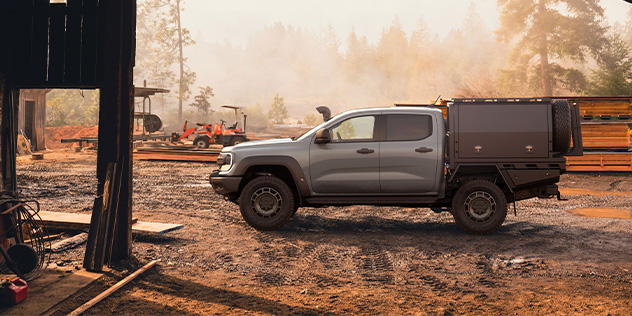
Choosing the best tow vehicle for caravanning in Australia isn’t just about power — it’s about matching your set-up to your needs, understanding towing capacity, and knowing the legal limits.
With more Aussies embracing road trips and caravan adventures than ever before, demand for reliable, capable tow vehicles in Australia continues to rise. From mid-size SUVs to heavy-duty 4WDs and even electric vehicles for towing, there’s a wide range of options available — but not all are suited to hauling a fully loaded caravan or trailer.
Whether you’re planning to tour the outback, explore coastal highways, or just need something to tow a boat or camper on weekends, the vehicle you choose for towing will have a big impact on your safety, fuel economy and travel experience. It’s essential to understand vehicle towing ratings, know your caravan weight, and make sure your vehicle is legally allowed to handle the load.
In this guide, we break down everything you need to know about how to choose the best tow vehicle for caravanning in Australia, including features to look for, safety tips, and popular models that suit a variety of towing needs.
Police operations over the years have revealed staggering numbers of overweight rigs and very few drivers who know towing regulations. Head to the Transport for NSW website to ensure you’re not one of them.
The NRMA also has a handy guide on knowing your key weights when towing.
Before hitting the road, it’s essential to understand Australia’s towing laws and legal requirements, which vary slightly between states and territories but share some national rules. First and foremost, your vehicle must not exceed its maximum braked towing capacity as stated by the manufacturer — this is not just a guideline, it’s a legal limit.
You’ll also need to be aware of your Gross Combined Mass (GCM) — the total weight of your vehicle and trailer combined. Exceeding it can void your insurance and lead to fines or defect notices.
Other key requirements include:
Check your state’s road authority (like Transport for NSW, VicRoads or TMR QLD) for specific towing requirements. And if you're planning a big trip, it’s worth having your setup weighed at a certified weighbridge to ensure you're compliant before hitting the highway.
Torque trumps power in towing vehicles. If a lap of the continent with a large van is on the radar, a dual-cab ute or large 4WD should be considered. A 400Nm output is a good starting point, while 500Nm-plus is even better for heavier loads.
While on paper 2.0- to 2.5-litre turbo-diesels can have similar torque to 3.0-litre-plus versions, they won’t share the same driveability. Under light throttle loads there isn’t much difference, but larger diesels come into their own when the going gets tough.
A factory towbar package for your vehicle is preferred. They’re more expensive than aftermarket but can save you grief. For example, the factory wiring harness is designed to specifically work with the vehicle’s safety systems and rearview camera.
Check out this guide for some handy tips on how to drive safely when towing.
Nothing destroys a vehicle quicker than corrugated roads in the outback. If you’re planning a lot of off-road driving in remote areas, 4WDs built on a separate chassis (known as body-on-frame) will better survive the rough stuff.

When it comes to towing a caravan in Australia, reliability, towing capacity and comfort are key. In 2025, the market is full of strong contenders — from rugged 4WDs to more refined SUVs. The Toyota LandCruiser 300 Series remains a favourite for long-haul touring thanks to its 3.5-tonne braked towing capacity, diesel V6 engine and off-road pedigree. For those wanting something slightly more affordable, the Ford Everest also offers a strong 3,500kg towing capacity in a family-friendly SUV body.
If you prefer a dual-cab ute, the Ford Ranger, Volkswagen Amarok and Isuzu D-MAX are capable of towing large caravans and equipped with features like trailer sway control, integrated brake controllers and towing-specific driving modes. The Mazda BT-50 and Toyota HiLux are other popular choices for their balance of comfort and towing muscle.
Choosing the right vehicle will depend on what you're towing, how often, and whether you plan to head off-road or stick to sealed highways.
Electric vehicles (EVs) are becoming more popular, but when it comes to towing heavy loads, diesel still leads the charge in 2025 — especially for long-distance travel and remote touring. Diesel engines offer higher torque at low revs, which is ideal for pulling weighty caravans and trailers. They’re also more fuel-efficient under load and have the range and refuelling convenience that suits outback trips.
If you're sticking to shorter trips or caravan parks near urban areas, an electric tow vehicle could work. Read Open Road’s experience of towing with an EV here.